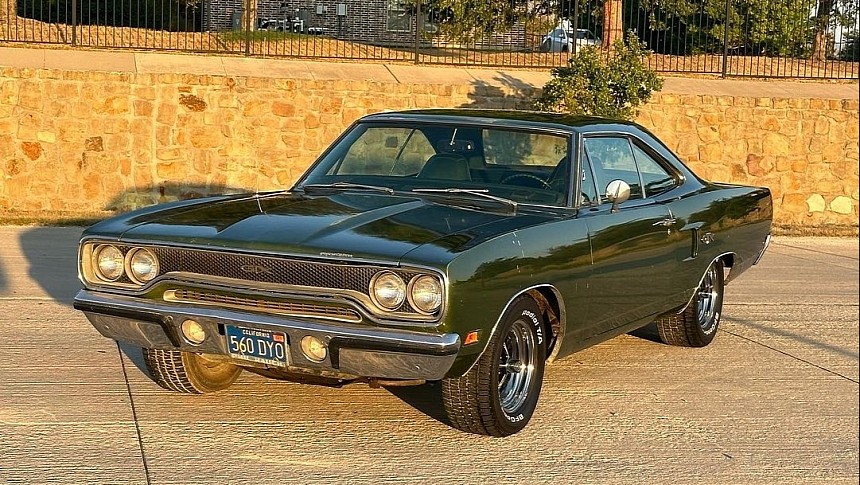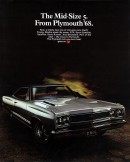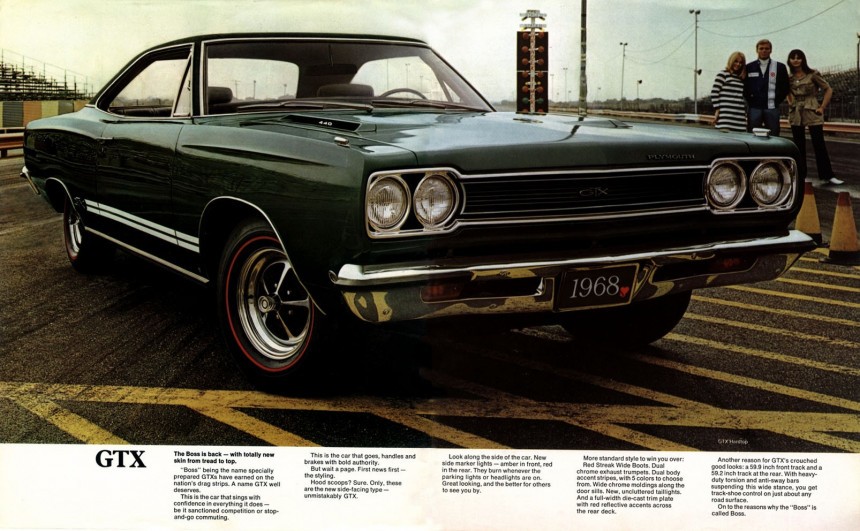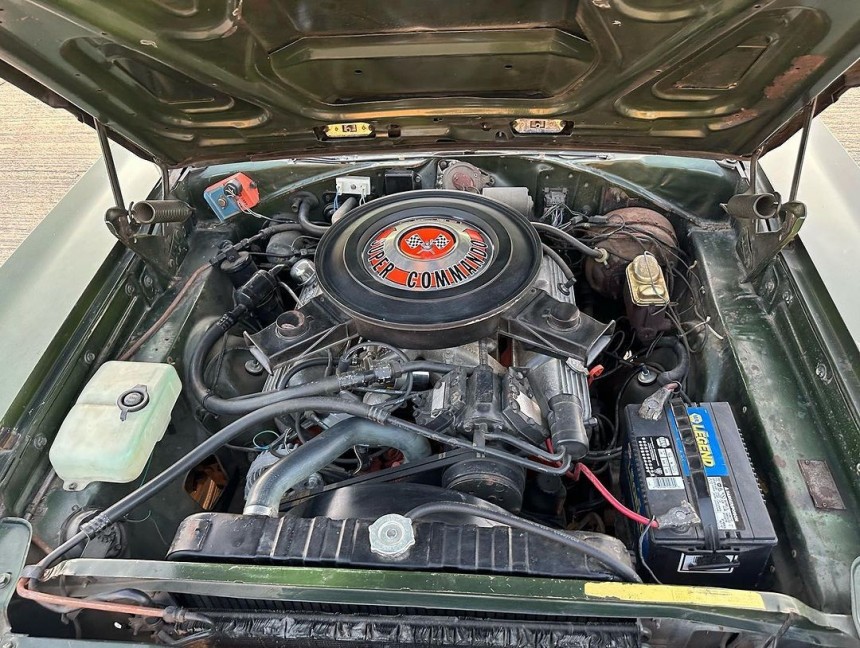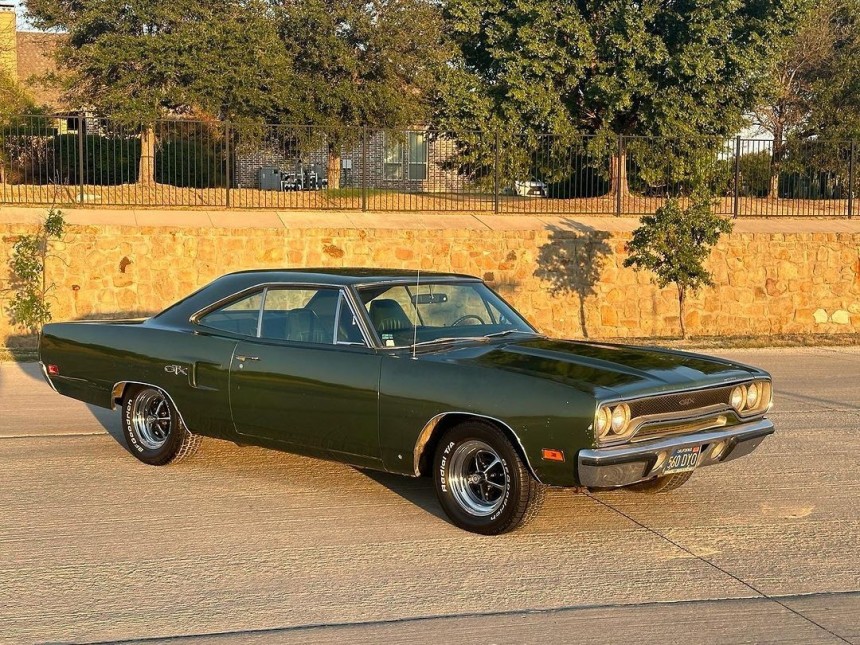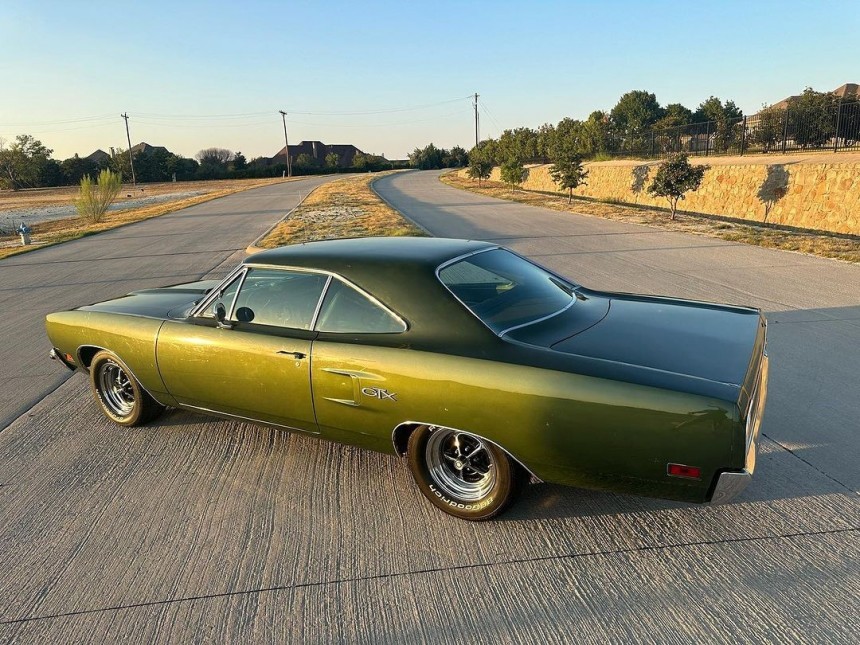Not all the Golden Era muscle cars were born equal – some fell under a lucky (Penta)star, while others fell from the crib. Some were purposefully built in small numbers to smear an aura of prestige and exclusivity on the brand and the cars’ owners; others were inexplicably expensive and didn’t come with a worthwhile performance offer. A select group is the homologation specials – think Boss 9 or the winged Mopars.
There’s one adverse-fortunes category with all the bells and whistles to be a superstar but came out at the wrong time. The Plymouth GTX might just as well be one of those soldiers of misfortune who saw action in the heat of battle but didn’t quite make a difference.
First commissioned in 1967 as the top-trim level of the Belvedere, the Sobriquet became a self-made model a year later. It didn’t last long – just five years- and didn’t impress the paying customer. Granted, it had fierce competition – from the other two Detroit Big – but also from Ma Mopar’s own brood.
Chrysler timed its moves in a very contradictory manner in 1968 – releasing both the budget-friendly and budget-hungry muscle cars that year. The Road Runner was the bare-bones, all-fun-no-fuss cheap car for virtually every hot-headed, lead-footed weekend racer in America. (Perhaps that’s why it got the Car of the Year medal of distinction when launched).
The GTX, on the other hand, was the ‘Mr. Hyde’ to the Road Runner’s 'Dr. Jekyll' persona – costly, luxurious (for the American automotive standards of the era), and not readily available for the average Joe. Peaking above 4,000 dollars, it was sniffing the high-money fumes of the ‘vette or aiming for the crown of a King of the Road Shelby G.T. 500.
However, unlike the two notable makes mentioned above, the Plymouth GTX didn’t brag about its distinct character of blue-blooded upbringing. It simply stated “The Boss is back” in its sales literature (see it in the gallery) – Boss being the moniker earned by the Belvedere GTX at the dragstrips.
This is the keystone attribute of the GTX – it came out as a gentlemen’s muscle car, but it carried the biggest guns in town. The standard engine was Chrysler’s biggest-block V8, the 440 Super Commando. Armed with a four-barrel carburetor and a TorqueFlite automatic with three speeds, the 7.2-liter V8 was a mannered ogre.
375 horsepower and 480 lb-ft of sanctioned-events-acquired manners, to be specific – even Plymouth salesmen recommended the straight-line flat-out usability of the GTX. Remember, the year was 1968, so ratings were registered as gross values: 380 PS, 651 Nm. The engine was exclusive to the GTX within Plymouth’s line-up for that year.
The only motor option was the hemispherical-carved mastodont - all 426 cubic inches of tire-shredding, stoplight-racing V8 fun. The seven-liter HEMI and its big brother stayed true to the GTX for the car’s entire production run that ended with the 1971 model year.
In 1970, one year before the unofficial federalized counteroffensive against muscle car performance, the GTX got a performance upgrade. Namely, the 7.2-liter V8 swapped the single quad-barrel with a trio of double-throat carbs.
With the newly acquired air flow of 1,350 cubic feet per minute, the big engine delivered an extra 15 hp and only 10 lb-ft of additional force to spin the crankshaft. At 390 hp and 490 lb-ft, it was a serious alternative to the range-topping HEMI. But something happened – and not in a good way. Buyers stayed away from the muscle-bound GTXs in 1970.
Truth be told, sales had been flopping since day one in 1967, with production numbers constantly dropping with every model year. For 1970, Mopar recorded a GTX production of 7,148 examples, with the 440 4-V V8 being the workhorse of the bean counters’ bookkeeping. 6,398 GTXs came with the standard engine, while only 678 got the limited-availability six-barrel.
The HEMI didn’t see much posh-mannered action under the '70 GTX badge – only 72 cars were blessed with the mean engine. In 1970, Plymouth kept one body style for its high-class GTX – the hardtop. If we are to break down the production numbers even further, the 440 four-barrel with an automatic box sold just shy of 5,000 units (4,927, to be specific).
Just to get a reference point about how disappointing the GTX was – when seen through the profits periscope – note that the Road Runner sold eight times more cars in 1970 than its more luxurious cousin. For those with high-compression, high-axle-ratio intents and purposes in mind, the GTX simply wasn’t worth the extra $600 difference between the base prices of the two Plymouths.
And that’s why an all-original, patina-bruised GTX from 1970 is a sight for sore eyes – so look at this marvelous survivor in Allen, Texas. Initially a California car, the mainstay GTX of its model year sports the factory Dark Green Metallic paint and its color-keyed green interior.
It’s not one of the more desirable six-barrel or HEMI variants. Still, it has its original powertrain intact (listen to it idle in the video) and the matching numbers Heavy Duty A-727 TorqueFlite with three on the tree. The seller doesn’t say whether the car has the standard 3.23 rear or if this orphan was born with the 3.55 option.
However, the GTX did receive several amenities – power steering and brakes, air conditioning, an 8-track, manual six-way-adjustable driver’s seat, and the Tic-Toc Tach. The seller claims the lights, wipers, most gauges, and the radio work. Also, the ad and photo gallery tell that the valve covers, headers, and day-two aluminum intake manifold are not the same as those put in the car 54 years ago, on November 19, 1969, in the Los Angeles Mopar plant.
First commissioned in 1967 as the top-trim level of the Belvedere, the Sobriquet became a self-made model a year later. It didn’t last long – just five years- and didn’t impress the paying customer. Granted, it had fierce competition – from the other two Detroit Big – but also from Ma Mopar’s own brood.
Chrysler timed its moves in a very contradictory manner in 1968 – releasing both the budget-friendly and budget-hungry muscle cars that year. The Road Runner was the bare-bones, all-fun-no-fuss cheap car for virtually every hot-headed, lead-footed weekend racer in America. (Perhaps that’s why it got the Car of the Year medal of distinction when launched).
However, unlike the two notable makes mentioned above, the Plymouth GTX didn’t brag about its distinct character of blue-blooded upbringing. It simply stated “The Boss is back” in its sales literature (see it in the gallery) – Boss being the moniker earned by the Belvedere GTX at the dragstrips.
This is the keystone attribute of the GTX – it came out as a gentlemen’s muscle car, but it carried the biggest guns in town. The standard engine was Chrysler’s biggest-block V8, the 440 Super Commando. Armed with a four-barrel carburetor and a TorqueFlite automatic with three speeds, the 7.2-liter V8 was a mannered ogre.
The only motor option was the hemispherical-carved mastodont - all 426 cubic inches of tire-shredding, stoplight-racing V8 fun. The seven-liter HEMI and its big brother stayed true to the GTX for the car’s entire production run that ended with the 1971 model year.
In 1970, one year before the unofficial federalized counteroffensive against muscle car performance, the GTX got a performance upgrade. Namely, the 7.2-liter V8 swapped the single quad-barrel with a trio of double-throat carbs.
Truth be told, sales had been flopping since day one in 1967, with production numbers constantly dropping with every model year. For 1970, Mopar recorded a GTX production of 7,148 examples, with the 440 4-V V8 being the workhorse of the bean counters’ bookkeeping. 6,398 GTXs came with the standard engine, while only 678 got the limited-availability six-barrel.
The HEMI didn’t see much posh-mannered action under the '70 GTX badge – only 72 cars were blessed with the mean engine. In 1970, Plymouth kept one body style for its high-class GTX – the hardtop. If we are to break down the production numbers even further, the 440 four-barrel with an automatic box sold just shy of 5,000 units (4,927, to be specific).
And that’s why an all-original, patina-bruised GTX from 1970 is a sight for sore eyes – so look at this marvelous survivor in Allen, Texas. Initially a California car, the mainstay GTX of its model year sports the factory Dark Green Metallic paint and its color-keyed green interior.
It’s not one of the more desirable six-barrel or HEMI variants. Still, it has its original powertrain intact (listen to it idle in the video) and the matching numbers Heavy Duty A-727 TorqueFlite with three on the tree. The seller doesn’t say whether the car has the standard 3.23 rear or if this orphan was born with the 3.55 option.
However, the GTX did receive several amenities – power steering and brakes, air conditioning, an 8-track, manual six-way-adjustable driver’s seat, and the Tic-Toc Tach. The seller claims the lights, wipers, most gauges, and the radio work. Also, the ad and photo gallery tell that the valve covers, headers, and day-two aluminum intake manifold are not the same as those put in the car 54 years ago, on November 19, 1969, in the Los Angeles Mopar plant.
